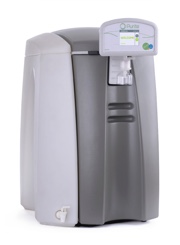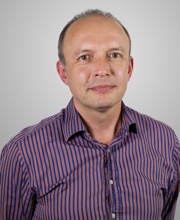Purified water is critical to the pharmaceutical industries, in operations ranging from formulating drugs to rinsing glassware. The bigger the operation, the more purified water will be needed. Considering just a few specific applications within pharmaceutical development – cell culture, media preparation, DNA sequencing and genome research – illustrates the crucial need for purified water of the highest quality. So that these and other processes can be carried out safely and effectively – and be fully validated – water has to be purified to approved standards. Pharmaceutical companies are experts in their fields, so it makes sense to outsource the critical job of water management to an equivalent expert.
When developing a water purification system from scratch or making the step from low volume laboratory trials to batch or full production, it helps to have a clear understanding of the critical phases involved
In the pharma sector, water quality is regulated by national and international bodies, specifying three commonly used grades of water: United States Pharmacopoeia (USP) specifies two grades – purified water (PW) and water for injection (WFI); while European Pharmacopoeia (EP) specifies an additional grade – highly purified water (HPW).
These rules outline specific parameters and measuring criteria for the water used in certain applications, but do not typically detail the system design considerations or maintenance regimes needed to achieve these quality levels. Instead, this falls within the remit of validating bodies, such as the US Food and Drug Administration (FDA), which aim to ensure compliance with standards by checking that system design, installation, monitoring and maintenance procedures are in place to facilitate consistent, traceable performance to the relevant standards.
In addition to these organisations, documents such as the current Good Manufacturing Practice (cGMP) and the ISPE Water and Steam Guide can help organisations with purified water requirements.
Water audit
When developing a water purification system from scratch or making the step from low volume laboratory trials to batch or full production, it helps in each case to have a clear understanding of the critical phases involved. The key consideration is that the final product remains unchanged, while the same applies to the quality of purified water required to produce it and the verification procedures used to ensure compliance.
The first step involves drafting the User Requirements Specification (URS). This document defines and specifies the requirements of the water purification system. It should provide enough detail and information for a prospective system provider or advisor to suggest a solution that will provide purified water that reaches the quality, quantity and consistency needed.
This initial audit involves sending samples of the existing feedwater supply for detailed mineral and microbiological analysis. While the local authority or water supplier should supply relevant information, it is nonetheless prudent to have this confirmed by an independent specialist. If a surface water or borehole source is being used, a detailed evaluation of water characteristics is critical. The pre-treatment system can therefore be appraised and a specification drawn up. If water conditions are changeable, then the design of raw water treatment systems and the provision of pre-treatment will need to take account of this.
Calculating the size of the water purification system is the next step. Working out peak demand while establishing the volume required on a regular basis ensures that any immediate and future needs can be met while avoiding subsequent costs that may be incurred by changing the design – which would mean revalidating the system.
The quantity and pattern of water use are important considerations when designing the system. Technicians often look at total consumption over a daily, weekly or monthly period, but should also analyse the pattern of daily use and consider peaks and troughs in water requirements.
A system must be sized correctly: large enough to cope with demand, but no larger than necessary. An oversized system takes up precious space, and can also affect performance; for example, Reverse Osmosis (RO) is potentially less efficient if the plant is operational only for relatively short periods. For this reason, designers should accurately estimate the number of points that will be in use at any one time. If it is assumed that all points will be in use at once – drawing maximum flow – this can lead to an oversized system.

Select Fusion provides small volumes of ultrapure water to 18.2MΩ.cm from a mains supply
Once water has been purified it must be accessible to laboratory or production staff – through self-contained, individual units throughout the laboratory, a ring-main distribution system or in-line process units. Space is a precious commodity in lab environments, so options need to be as unobtrusive as possible. If supplies are required at different manufacturing locations, a centralised system that feeds a ring-main may be the better option, offering a compact solution that can deliver high volumes at verified quality. Providing the right capacity can also mean that storage has to be part of the solution.
Higher volume production typically uses scaled-up versions of the smaller water purification systems supplemented by systems such as: sand and multi-media filters, to eliminate particulates; activated carbon adsorption systems, which remove organic contaminants and chlorine compounds that can affect colour, taste and odour; cartridge filtration for pre-treatment; and reverse osmosis, which removes ionic contaminants. All of these must be fully validated to the appropriate standards.
Filtering techniques
Water goes through a series of operations to make it acceptable for production. The first stage, pre-treatment, removes particulate and organic matter using a variety of techniques, such as sand or multimedia filtration, or finer cartridge-type filters. Filters are commonly used in series, with each filtration stage taking out smaller particles than the previous one. If raw water quality is particularly poor and has a high fouling potential, ultrafiltration, using membrane technologies, can be more cost effective.
Pre-treatment also eliminates contaminants that might interfere with RO – in which pressurised feed water is passed through specialised semi-permeable membranes to remove inorganic ions and dissolved organic contaminants.
The feed water for an RO system is typically softened to prevent build-up of calcium deposits on the membranes. This is normally achieved using softening resins that remove hardness by exchanging calcium ions – the main contributor to hardness – with sodium ions. The process is reversible, allowing the softener to be automatically regenerated.
Filters are commonly used in series, with each filtration stage taking out smaller particles than the previous one
Another process used in pre-treatment is carbon filtration, which removes free chlorine – used as a disinfectant in drinking water – and reduces the level of dissolved organics.
RO removes around 98% of minerals and salts from a water sample. Its membranes can operate at an efficiency up to 75%, depending on feed water quality. As well as demineralising water, the membrane also removes micro-organisms.
Next, the remaining ions need to be removed by way of deionisation. Conventionally, this was achieved using cation or anion specific ion exchange resins. These were later regenerated using acid or caustic soda. But a more efficient process called electro-deionisation (EDI), which uses no hazardous chemicals, is now preferred. It uses ion exchange resins sandwiched between charged membranes. Under a voltage, the ions are attracted out of the water and towards the relevant electrode. Hydrogen and hydroxyl ions, generated in situ, make the process self-regenerating.
Defining the system
Once the water side of the audit is concluded, it is important to consider what the equipment will be used for. Within the URS document, a section relating to ‘System Definition’ may include, for example, details as to the preferred functionality and operating schedule. Once all of this has been taken into account, the owner or operator will be in a good position to create a scaled-down model, which will represent the resulting larger system.
To make the transition to higher volume products, manufacturers should find a water purification expert provider who has a solid track record of developing, installing and supporting high quality technology that is validated specifically for this sector. A correctly chosen partner can then guide customers towards a system that can handle both current and future needs.

Mark Bosley
An effective water purification system must maintain water quality as well as produce it in sufficient volume to meet demand. Purified water storage and distribution systems must be hygienically designed. It is important to minimise the length of pipework between the source of purified water generation and the points of use, and avoid dead-legs or static water. Once the purified water is generated, consideration must be given to the material of all wetted parts – as contaminants can leach out of many metals and plastics.
Typically, sanitary welded 316L stainless steel piping with equivalent grade pumps, heat exchangers and components are used to store and distribute purified water. Stainless steel is relatively inert, can be installed to eliminate potential traps for bacteria, and can be thermally disinfected at very high temperatures.
To ensure that a system maintains its quality, in terms of bacterial counts, it is essential that system and distribution pipework can be easily and completely sanitised. For the distribution loop, sanitisation is commonly in the form of heat, using either hot water (>80°C) or pressurised steam – both of which are routinely available in most pharmaceutical environments. Ozone is highly effective and also widely used in this regard, but its hazardous nature dictates that safety systems and monitoring be put in place.
The effluent from pharmaceutical manufacture may not look dirty, but it potentially contains more harmful substances than wastewater from many other industries
While great attention is focused on the treatment of incoming water, which ensures final product quality, it is important not to forget the treatment of wastewater. The effluent from pharmaceutical manufacture may not look dirty, but it potentially contains more harmful substances than wastewater from many other industries.
Some of the techniques used in water purification can also be put to use in effluent treatment. Reverse osmosis, for example, removes the majority of minerals from effluent, to allow safe discharge into water courses. Alternatively, concentrated effluent evaporation drives off all the water, so there is no need for a liquid discharge, with systems such as Evalix, from SUEZ Water Purification Systems UK, using plant-generated biogas to evaporate the water. Cleaning-in-place (CIP) water can also be treated, using physico-chemical treatment.
All these measures help to ensure that the water that leaves the plant is at least as clean as the water that comes in.




